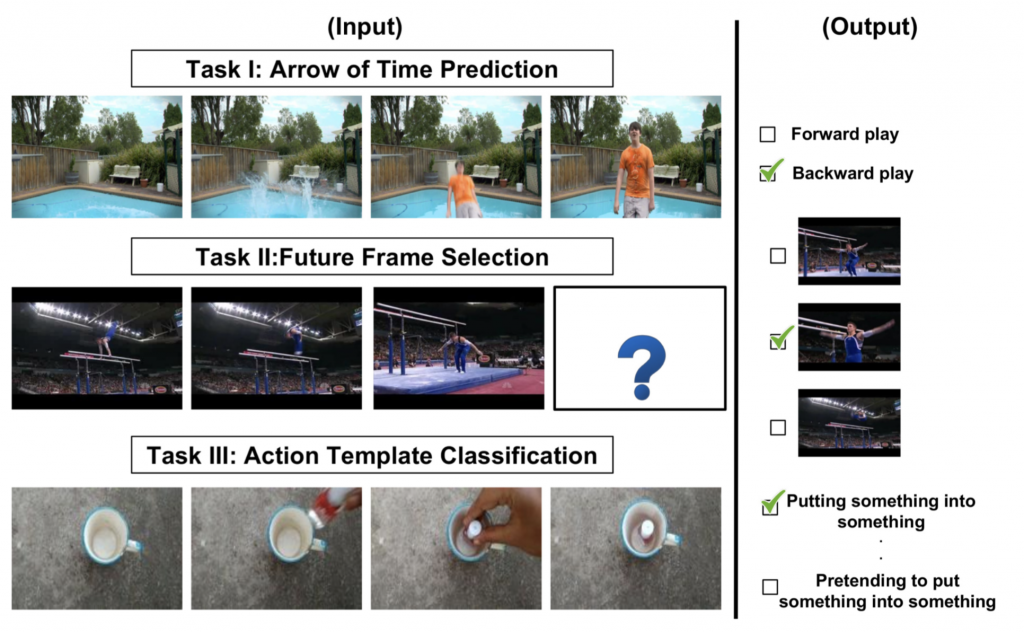The CVPR 2020 paper: Actor-Transformers for Group Activity Recognition by Kirill Gavrilyuk, Ryan Sanford, Mehrsan Javan and Cees Snoek is now available. This paper strives to recognize individual actions and group activities from videos. While existing solutions for this challenging problem explicitly model spatial and temporal relationships based on location of individual actors, we propose an actor-transformer model able to learn and selectively extract information relevant for group activity recognition. We feed the transformer with rich actor-specific static and dynamic representations expressed by features from a 2D pose network and 3D CNN, respectively. We empirically study different ways to combine these representations and show their complementary benefits. Experiments show what is important to transform and how it should be transformed. What is more, actor-transformers achieve state-of-the-art results on two publicly available benchmarks for group activity recognition, outperforming the previous best published results by a considerable margin.




 The ICCV paper “SILCO: Show a Few Images, Localize the Common Object” by
The ICCV paper “SILCO: Show a Few Images, Localize the Common Object” by  The ICCV paper “Counting with Focus for Free” by
The ICCV paper “Counting with Focus for Free” by  The paper “Repetition Estimation” by Tom Runia, Cees Snoek and Arnold Smeulders has been accepted by the International Journal of Computer Vision. The
The paper “Repetition Estimation” by Tom Runia, Cees Snoek and Arnold Smeulders has been accepted by the International Journal of Computer Vision. The  The CVPR 2019 paper Spherical Regression: Learning Viewpoints, Surface Normals and 3D Rotations on n-Spheres by Shuai Liao,
The CVPR 2019 paper Spherical Regression: Learning Viewpoints, Surface Normals and 3D Rotations on n-Spheres by Shuai Liao,  The CVPR 2019 paper Dance with Flow: Two-in-One Stream Action Detection by
The CVPR 2019 paper Dance with Flow: Two-in-One Stream Action Detection by  The paper “Pointly-Supervised Action Localization” by Pascal Mettes and Cees Snoek has been published in the International Journal of Computer Vision.
The paper “Pointly-Supervised Action Localization” by Pascal Mettes and Cees Snoek has been published in the International Journal of Computer Vision. 
